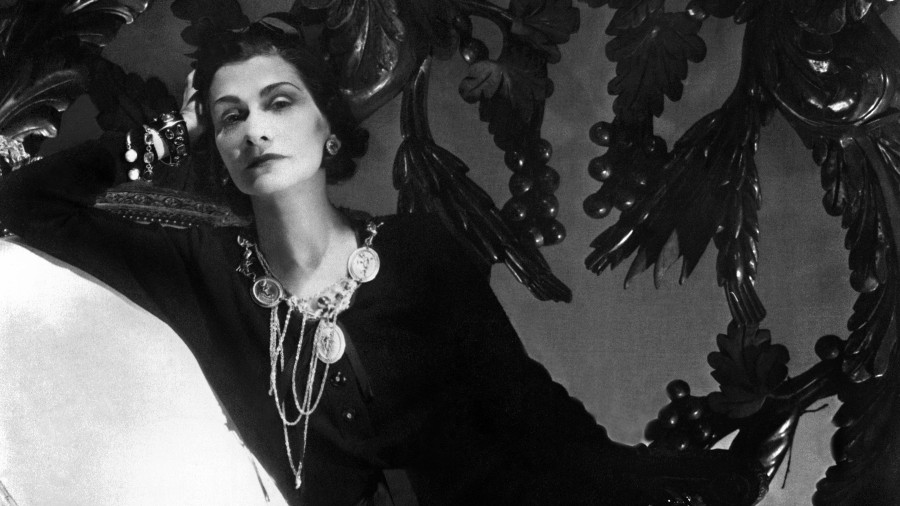
After more than three decades of research, this story comes to an unauthorized book.
Chanel’s No. 5 is the world’s most famous perfume, the only pajamas by actress Marilyn Monroe, the engine of designer Gabrielle Chanel’s wealth and an almost fetishistic object that in 2021 will turn 100, surrounded by a aroma of success but also of controversy.
His story fascinated the French writer Marie-Dominique Lelièvre, author of books such as “Saint-Laurent, bad boy” or “Chanel & Co: Les coco de Coco”, which now publishes in Spanish “El Nº 5 de Chanel , unauthorized biography “.
Read also: Get 2021 with a new face! Look at these 5 haircuts that will impose style
The book came to light after almost 30 years of research that led Lelièvre to all the secrets of the brand and its designer, as one of the curiosities of this perfume is that it represents in itself the history of the Chanel empire.

Casa-Dominique Lelièvre devoted herself to writing this interesting story in a book. Photo EDH / EFE
Its creation dates back to a 1921 alliance between the French-Russian perfumer Ernest Beaux and the seamstress, and its name is the main subject of debate among historians and amateurs.
The version that was christened with the number of the show that Chanel liked best or the story she offered about the reasons why five was her lucky number are some of the rumors denied by Lelièvre’s research.
In this case, perfume lovers, based on a high proportion of roses and jasmine, will have to assume that there are multiple possibilities about the choice of name because the reality remains a mystery.
Clean smell
“Something very special, that doesn’t stain, that smells really good, if not, it’s over, it’s chaos,” were the instructions Chanel gave Beaux, probably unaware that the sample she herself went to choose was actually a perfume that had disappeared from imperial Russia, the Rallet No. 1, created by the Romanov perfumer shortly before the outbreak of the Revolution.

This perfume is a classic in the fashion world. Photo EDH / AFP
The Frenchwoman, an orphan with a miserable childhood, almost illiterate, and with her beauty and cunning as her only weapons, managed to create an empire out of nothing, but in the 1920s, when sewing was the only thing that truth mattered to him, he could not imagine that perfume would be a universal success and that it would make her rich.
The money came much later because, in 1924, he allied with the brothers Pierre and Paul Wertheimer and Théophile Bader, one of the founders of Galeries Lafayette, to create the company Les Parfums de Chanel.
Convinced that registering a trademark in her name was already an honor, she settled for 10% of the capital while the Wertheimers were awarded 70% and Bader received the remaining 20%.
Don’t miss out: Ways to include your pets in New Year’s Eve celebrations
His little whim, in a small laboratory-looking bottle, soon became the first bestseller in history, especially in the United States.
When Chanel realized her mistake it was too late and she felt cheated. Her maneuvers to regain more rights over her creation began in the 1930s and reached its peak during the Nazi occupation (1940-1944), with which she, like so many other members of the French elite, he was complacent.
The dark years of occupation
Chanel anti-Semitic, Chanel collaborationist, Chanel spy, Chanel lover of a high German military with a bloody resume … There are many complaints about the dark past of the designer in recent years and there are many, too, who try to justify it.
Lelièvre confesses that she had to stop her research when she found in the national archives a letter, signed by the designer herself, where in trying to recover her mark from the Wertheimers, Jews, she betrayed herself.
Some time later, the author confesses to EFE, “without understanding or justifying it”, she knew how to accept the gray areas of her heroine, who maintained throughout her life, as other witnesses report, an obvious anti-Semitism.

Coco Chanel was always involved in controversy. Photo EDH / AFP
“I would have liked to show that it wasn’t true because it didn’t affect my character’s aura, but unfortunately it is,” acknowledged Lelièvre, who believes that despite all this dark phase makes the general interest in the designer even more so. great.
In parallel, he draws a devoted friend, who always maintained a generous attitude towards working women, with whom he felt identified.
Probably thanks to the intervention of a senior official in the French administration, Chanel left this past behind and legally regained a higher percentage of profits.
You may be interested in: Meet Andrea Tobar, the talented Salvadoran artist who fills the world with colors
At the age of 70, she reopened her brand and revolutionized fashion again with the creation of her famous “tweed” dress, another emblem of the house.
Today, the firm is far from the quality and craftsmanship offered by its designer and Lelièvre wonders if this perfume will not yet be the only luxury item left in Chanel.
Would the creator rebel against the business her firm has become, like most of her opponents?
“No, Chanel was a saleswoman, she had a very clear sense of practicality, and unlike me, who am a dreamer, she would most likely have adapted to this new world,” the writer assumed.